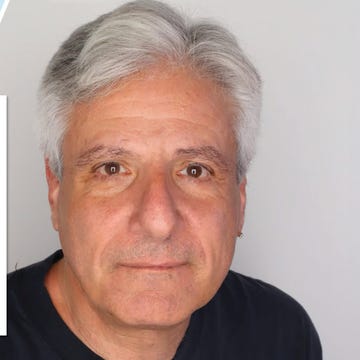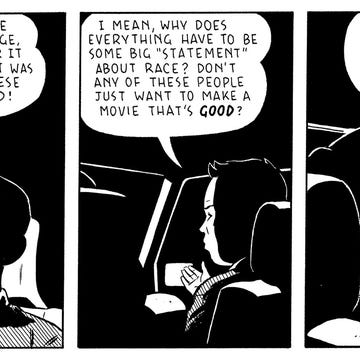In his 2022 memoir, Solito, Javier Zamora charts his perilous migration story from El Salvador to the United States, when he was nine years old, to reunite with his parents, who’d left their home country when he was a baby. The journey is told in diaristic, day-by-day fragments from March 1999 to June 1999. In the span of those few months, Zamora assumes temporary identities and personas with a tight-knit group of strangers who became instrumental in saving his life.
Solito is freighted with a harrowing sense of anticipation—the desire of new beginnings and freedom as well as the fears of capture, the dangers that lie ahead, and the anxiety of what interpersonal squabbles might emerge. Indeed, most of the memoir is spent waiting for the next steps of the journey and the disquieting anxiety it produces.
Solito doesn’t begin at the start of the journey itself; rather, we are offered an intimate look at Zamora’s life leading up to it. We become witnesses to Zamora’s sacrifice and the context in which he grew up. Long before Zamora leaves, he must put on a façade to those outside his immediate family, to hide the truth that, while his friends, classmates, teachers, and neighbors might believe he is traveling out of town for a few days, he will be gone forever. “Everyone believes I’m only missing a week. That I’ll be back next Monday. It’s easier than I thought to lie to my best friends,” Zamora shares.
The sense of absence grows. Events chip away at the people closest to Zamora, until he is by himself, or rather in the midst of strangers, who are ciphers to him. The first explicit reference to the title comes when Zamora’s grandfather leaves him at the Guatemalan border. Zamora writes: “I feel alone, lonely, solo, solito, solito de verdad.” From there, however, Zamora finds that his identity is constantly made and remade.
For instance, at the Guatemalan border, Zamora is tasked with memorizing a new persona before crossing the border. “Don Dago has given each one of us fake Mexican ID cards we have to memorize before we cross into México,” Zamora details, after he arrives at Tecún Umán. “We have Mexican names. Mexican birthplaces. But our same birth dates. On top of that, Don Dago gave us a photocopied sheet with the lyrics to the national anthem, ‘Mexicanos, al grito de guerra.’ We must know the chorus and first verse, as well as the number of soccer teams Guadalajara has in Liga Primera. We must love Las Chivas. We must know the name of the current president, Ernesto Zedillo, and who the best presidents have been.… And if anyone asks, we vote for el PRI.”
Of course, the trouble in assuming a temporary identity is not only that one will have to un-inhabit it at some uncertain point but that there is always the threat of getting found out. And the stakes of such a discovery couldn’t be any higher in Solito. When Zamora’s first attempt to cross the border is unsuccessful, he and many people in his original group of migrants—Patricia, Carla, and Chino—are captured by Border Patrol, and they tell the state agents that they are a family to secure their freedom. This point in the memoir, which details inhumane carceral conditions, is perhaps the most painful part to read, but it is necessary, with its clarity.
Zamora’s background as a poet shines through wondrously in Solito. The book’s descriptive language conjures a near-dreamlike, innocent vision propelled by a sense of childhood memory rising to the surface of one’s adult mind, like a tsunami suddenly coming to crash down at shore.
That a nine-year-old boy went through such a painful journey is cast in stark relief by the vivid scenes featuring the adults around him and how their squabbles remind Zamora of his own family and his own history, even as an unknown future awaits him. There are moments when Zamora assumes a steely exterior to ensure his own safety. The loneliness of this period in his life both shocks us and strikes us with its beauty. The past is called up in unexpected and moving moments that remind us that Zamora is coming of age in an ever-shifting context. The journey does conclude within these pages but continues to reverberate through Zamora’s life, influencing how he later comes to think about the self, identity, faith, and heritage.•
Join us on June 20 at 5 p.m. Pacific time, when Zamora will sit down with CBC host John Freeman and special guest Ingrid Rojas Contreras to discuss Solito. Register for the Zoom conversation here.
WRITING AS HEALING
Hamilton Cain writes about epigenetic findings pertinent to harrowing migration journeys like Zamora’s. —Alta
WHY I WRITE
Read Zamora’s powerful essay on the motivation for his writing: “I write for other Chepitos around the world, and for the politicians and others who still refuse to accept that we are fully human beings.” —Alta
WHY READ THIS
Alta Journal books editor David L. Ulin recommends Solito, commenting that the book’s narrative “offers a potent lesson in humanity.” —Alta
SUSPENDED ANIMATION
Critic Anna E. Clark reviews Miranda July’s novel All Fours, which, Clark says, embraces “that hoariest of genres: the novel of midlife crisis” and is “ripe with surreal possibility.” —Alta
Alta’s California Book Club email newsletter is published weekly. Sign up for free and you also will receive four custom-designed bookplates.

















